Iran Classic Tour Program, Tehran, Qom, Kashan, Abyaneh, Isfahan, Yazd, Persepolis, Shiraz
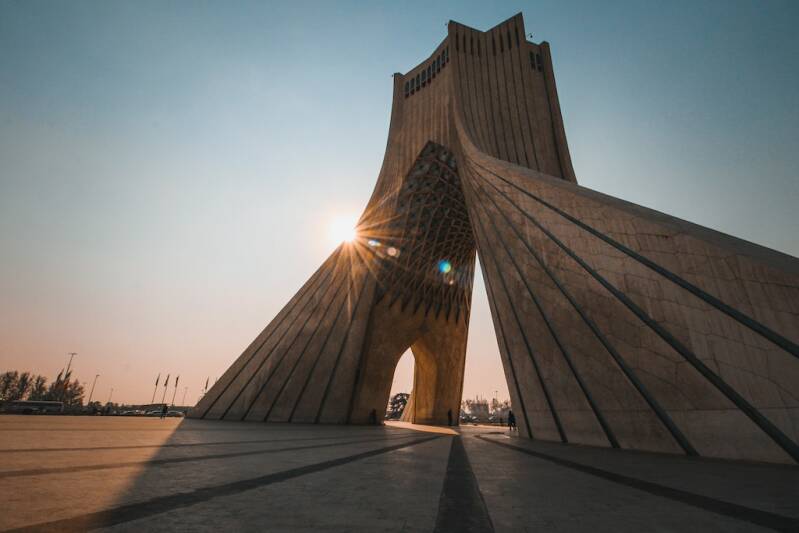
Day 1 – Arrival in Tehran
Upon arrival at Tehran Imam Khomeini International Airport, you will be warmly welcomed by our representative, who will provide an escorted transfer to your hotel in the capital of Iran. Take the rest of the day to relax and settle in, preparing for the exciting journey through Tehran’s history, culture, and attractions that lies ahead.
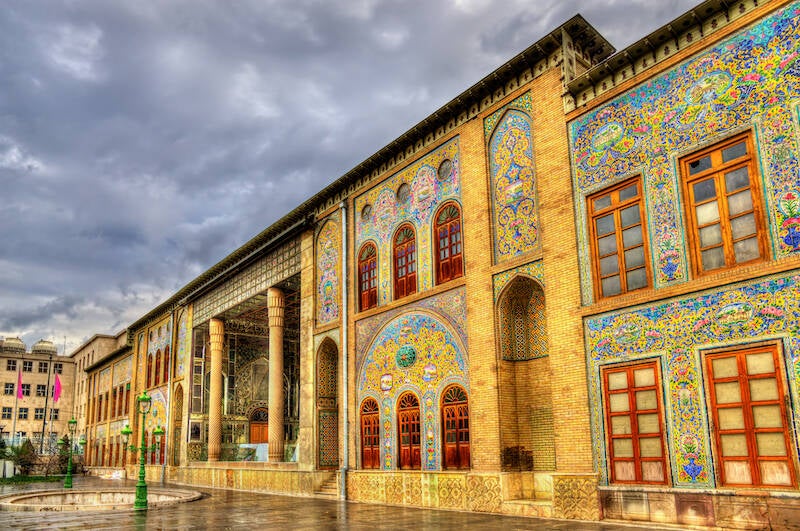

Day 2 – Discover Tehran: The Beating Heart of Iran
Your journey begins with a full-day exploration of Tehran, the vibrant capital of Iran and the largest metropolitan city in the Middle East. Known as the city that never sleeps, Tehran is a fascinating blend of tradition and modernity — a place where ancient heritage meets contemporary life.
Throughout its recent history, Tehran has been the stage for many of Iran’s most important political and cultural events. One day is hardly enough to uncover all its layers, but even a short visit reveals the city’s rich contrasts: from historic Qajar palaces to modern art galleries, from bustling bazaars to sleek shopping malls, and from mountain views to hip cafés and street food stalls.
For a classic Tehran city tour, we recommend starting with the National Museum of Iran. Divided into two sections — the Museum of Ancient Iran and the Museum of Islamic Art and Architecture — it offers an excellent introduction to the country’s long and diverse history. It’s the perfect starting point for understanding the treasures you’ll encounter throughout your journey in Iran.
Next, visit the magnificent Golestan Palace, one of Tehran’s oldest historical landmarks and a UNESCO World Heritage Site. Once the royal residence of the Qajar dynasty, this elegant complex includes 17 buildings, featuring palaces, halls, and museums. Inside, you’ll find exquisite examples of Persian craftsmanship alongside European artworks and gifts from the 18th and 19th centuries.
If time allows, make sure to stop by the Treasury of National Jewels — home to one of the most dazzling collections of gemstones in the world, each with a fascinating story.
Continue your exploration at the Tehran Grand Bazaar, one of the city’s most iconic attractions. Its vast network of corridors is divided by product type, creating a lively maze filled with carpets, spices, jewelry, and local crafts. This area represents the historic heart of Tehran and offers an authentic look into the city’s daily life.
To experience modern Tehran, head north to the Tabiat (Nature) Bridge, a contemporary architectural symbol connecting two large parks. It’s the perfect place to relax with a coffee, enjoy panoramic views, and watch how locals unwind after a busy day in the city.
These highlights are just a glimpse of what Tehran has to offer. Whether you’re passionate about history, architecture, or modern culture, this dynamic city will surprise you at every turn. For personalized recommendations or tailored city tours, feel free to contact our team — we’ll help you discover the Tehran that best matches your interests.

Day 3 – From Tehran to Kashan (Optional Stop in Qom)
Today you leave Tehran and head south toward Kashan, a city famous for its traditional Persian architecture and historic houses. On the way, you may choose to stop in Qom, one of Iran’s most important religious cities.
Qom is widely regarded as the center of the Islamic Revolution and is home to a large population of mullahs and Islamic scholars. The city is dominated by the magnificent Shrine of Hazrat-e Masumeh, sister of Imam Reza, which is one of the most significant pilgrimage sites for Shiite Muslims. Upon entering the shrine complex, you will immediately feel the spiritual atmosphere — women dressed in black chadors, mullahs in traditional attire, and thousands of pilgrims from across Central Asia and the Middle East create a scene of devotion and reverence. The mausoleum of Hazrat-e Masumeh sits at the heart of this vast complex, offering a profound cultural and spiritual experience.
In the evening, you will arrive in Kashan, a city renowned for its historical wealth and traditional Persian houses. You will stay in one of these beautifully restored historic houses, now transformed into a charming boutique hotel, offering an authentic experience of Kashani culture and hospitality.
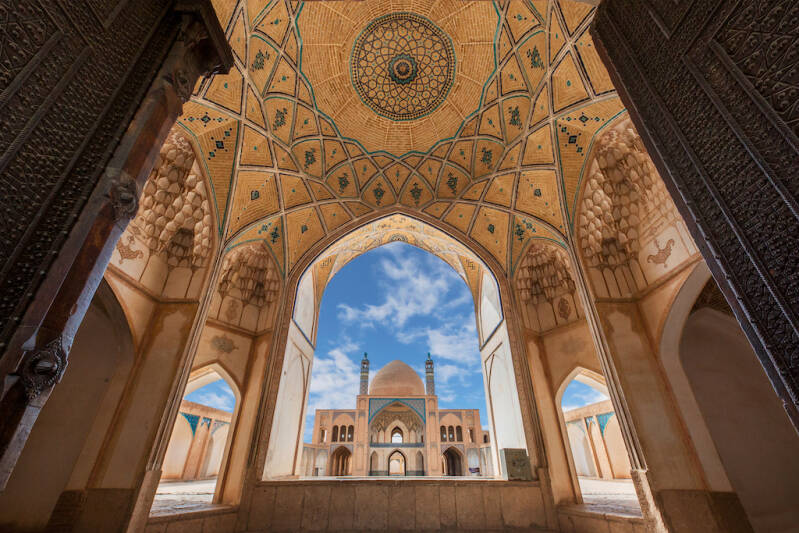
Day 4 – Exploring the Historic City of Kashan
Today you will explore Kashan, a small oasis town famous for its elegant merchant houses and rich cultural heritage. The city is home to magnificent historic homes, each decorated with intricate stained-glass windows, frescoes, and ornate interiors, reflecting the wealth and taste of Kashan’s former merchants.
Nearby, you can visit the Tabatabai House, known for its colorful stained-glass windows and beautifully decorated rooms, and the Broujerdi House, the home of a samovar merchant, where masterpieces by the renowned Iranian artist Kamal-ol-Molk adorn the walls.
Also in the area is Hammam-e Sultan Ahmed, a former traditional bathhouse. While it no longer serves as a hammam, the site is a stunning example of Persian architecture, featuring multiple rooms adorned with vibrant colored tiles.
One of the highlights of Kashan is Fin Garden, a historic Persian garden whose origins predate the Safavid period and were developed further under Shah Abbas II, gaining recognition during the Qajar era. The garden is not only an architectural masterpiece but also a site of historical significance: it was here that Amir Kabir, the famed Qajar chancellor known for his wisdom and justice, was assassinated in 1852.
For a glimpse into even older history, a short trip to the Sialk Hill archaeological site in the outskirts of Kashan reveals a settlement dating back to 6000–5500 BC, providing a fascinating perspective on ancient Iranian civilization.
Return to your hotel in the city center, where you can relax in a charming courtyard, surrounded by trees and a central fountain. Enjoy a cup of tea or a refreshing cold herbal syrup, soaking in the serene atmosphere of traditional Kashan hospitality.

Day 5 – From Kashan to Isfahan via Abyaneh
After breakfast, you will leave Kashan and journey toward Isfahan, the heart of art, culture, and architecture in Iran. Along the way, it is worth making a stop in Abyaneh, one of the country’s oldest and most picturesque villages, attracting both domestic and international visitors, especially during traditional ceremonies.
The people of Abyaneh have preserved their customs and traditions for centuries. You’ll notice the women’s distinctive attire, with long floral scarves and colorful skirts, reflecting the village’s cultural heritage. Abyaneh is also known as the Red Village, named after its red clay architecture that blends beautifully with the surrounding mountains.
Take time to walk through the village, explore narrow alleys, and visit the local mosque with its wooden mihrab, a fine example of traditional Persian craftsmanship. This hour of immersion in Abyaneh offers a unique glimpse into rural Iranian life and longstanding cultural traditions.
In the evening, you will arrive in Isfahan, where you can take a panoramic tour of the city, admiring its stunning bridges, historic squares, and skyline — a perfect introduction to one of Iran’s most iconic cities.


Day 6 – Discovering the Architectural Wonders of Isfahan
Today marks your first full day in Isfahan, one of Iran’s most stunning cities, where you will stroll along boulevards lined with gardens and marvel at masterpieces of Persian-Islamic architecture.
Your tour begins at Naghsh-e Jahan Square, one of the largest and most beautiful city squares in the world. On the eastern side stands the Sheikh Lotfollah Mosque, built during the Safavid dynasty under Shah Abbas I as a private mosque for the royal court. On the south side of the square is the Imam Mosque (formerly Shah Mosque), also commissioned by Shah Abbas I, and considered a masterpiece of Persian architecture.
Opposite Sheikh Lotfollah Mosque, you will find the Ali Qapu Palace, an imperial Safavid palace renowned for its intricate decoration and artistic grandeur. Just north of the square is the Qeysarie Bazaar, one of Isfahan’s oldest bazaars. The entrance dazzles with painted ceilings, while inside you can explore shops selling Persian carpets, miniature paintings, calligraphy, and tile work, or enjoy a refreshing cup of tea in a traditional tea house.
In the afternoon, a visit to Chehel Sotoun Pavilion is highly recommended. Built under Shah Abbas II, this pavilion is set within a beautiful garden and was used for royal entertainment. Its painted halls and scenic park offer a perfect setting to relax and soak in the elegance of Safavid art.
In the evening, you are free to enjoy Isfahan at your own pace, sampling high-quality local cuisine at one of the city’s many restaurants. No matter where your hotel is located, excellent dining options are never far away, allowing you to end the day immersed in the flavors and ambiance of this cultural capital.
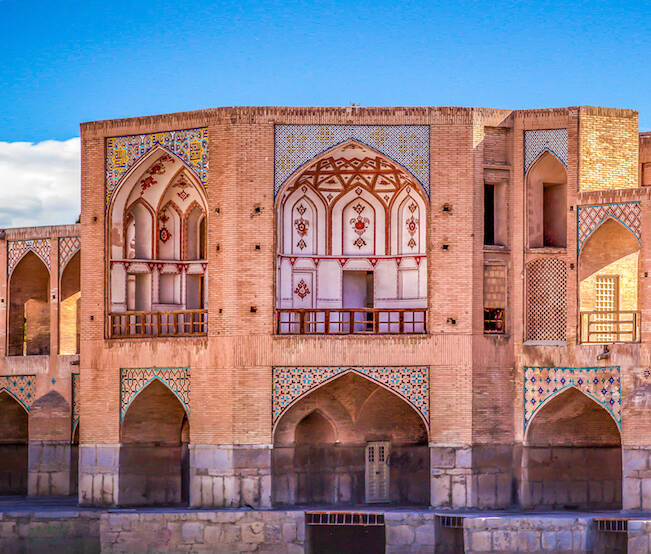
Day 7 – Exploring Bridges, Zayandeh River, and the Armenian Quarter of Isfahan
Wake up to another day in Isfahan, with memories of its intricate eslimi patterns, miniatures, and frescoes still fresh from yesterday. Today, you will explore both the architectural and cultural highlights of this stunning city.
Isfahan is famous for the Zayandeh River, the largest river of the Iranian Plateau, which flows through the city and is spanned by some of the most beautiful bridges in Iran. There are eleven historic bridges along the river, and today you will visit two of them. The Allahverdikhan Bridge, also known as Si-o-Se Pol, is the largest and most iconic. The second, the Khaju Bridge, is widely celebrated by scholars such as Arthur Pope and Jean Chardin as “the culminating monument of Persian bridge architecture,” combining utility, beauty, rhythm, and recreation in perfect harmony.
Next, you will explore the Armenian Quarter in Jolfa, home to a vibrant Armenian community in Isfahan. Here, visit the Vank Cathedral and its museum, which showcase Armenian art, architecture, and history. Stroll through the streets and alleys of Jolfa, where the aroma of fresh coffee fills the air — a reflection of the many coffee bars and cafes that make this district a lively evening destination. Jolfa is perfect for experiencing street food, local restaurants, and the vibrant energy of young locals enjoying the cultural hub of the city.
This day offers a blend of Persian architecture, riverfront beauty, and multicultural charm, giving you a deeper insight into Isfahan’s unique character.

Day 8 – From Isfahan to Yazd via Nain and Meybod
Today you leave Isfahan, carrying memories of its splendid Safavid architecture and arts, and head toward Yazd, a desert city known for its ancient Persian architecture and Zoroastrian heritage. Along the way, there are several fascinating stops worth exploring.
Your first stop is Nain, a city with a desert climate where ingenious qanat systems were developed centuries ago to bring water from the mountains to the plains. Nain is one of the best places to see these ancient underground aqueducts. The city also boasts some of Iran’s oldest monuments, including the Jame Mosque of Nain, and is well-known for its textile and carpet workshops, which reflect a rich artisanal tradition.
Continuing toward Yazd, you pass through Aghda, Ardakan, and Meybod. Make a stop in Meybod, a historic desert town with a history dating back to the pre-Islamic era. Here, you can visit the ancient Narin Castle (Narin Ghaleh), which dates back nearly 2,000 years to the Sassanid dynasty. Meybod also has impressive Safavid and Qajar sites, including a caravanserai, Chapar Khaneh (the historical postal service office), and the famous Meybod Ice Reservoir, an ingenious ancient cooling system. While strolling through the streets, you can also see ceramic and pottery workshops, showcasing traditional Iranian craftsmanship.
Late in the afternoon, you arrive in Yazd and check in at a charming boutique hotel in the old town. Staying here allows you to easily explore the city on foot and enjoy the unique atmosphere of Yazd, including roof-top cafes where you can relax and soak in the desert city’s ambiance before tomorrow’s exploration.

Day 9 – Exploring the Desert City of Yazd
Today you will discover Yazd, a city renowned for its unique desert architecture and ingenious windcatcher (Badgir) ventilation systems, designed to naturally cool homes during the hot summer months.
Begin your city tour with a visit to the Zoroastrian Fire Temple, where the sacred fire is said to have been burning continuously since around 470 AD. Yazd is home to a significant Zoroastrian community, making this temple an important spiritual and cultural site.
Next, explore the Dowlat Abad Garden, one of the finest examples of a Persian garden. Originally built for residential purposes, the garden features the tallest windcatcher in Iran at its center, demonstrating both aesthetic beauty and ingenious climate adaptation.
In the afternoon, stroll through Yazd’s old town to visit the Jame Mosque of Yazd and admire the striking Amir Chakhmaq façade, one of the city’s most iconic landmarks. Continue to the Yazd Bazaar, where you can witness the city’s famous Termeh silk textiles, celebrated worldwide for their intricate designs — a craft even noted by Marco Polo in 1272.
In the evening, experience a unique cultural activity at a Zurkhaneh, a traditional Persian gymnasium where Varzesh-e Bastani, an ancient system of athletics used to train warriors, is practiced. Watching this traditional sport offers a fascinating insight into Persia’s historical martial and athletic traditions.
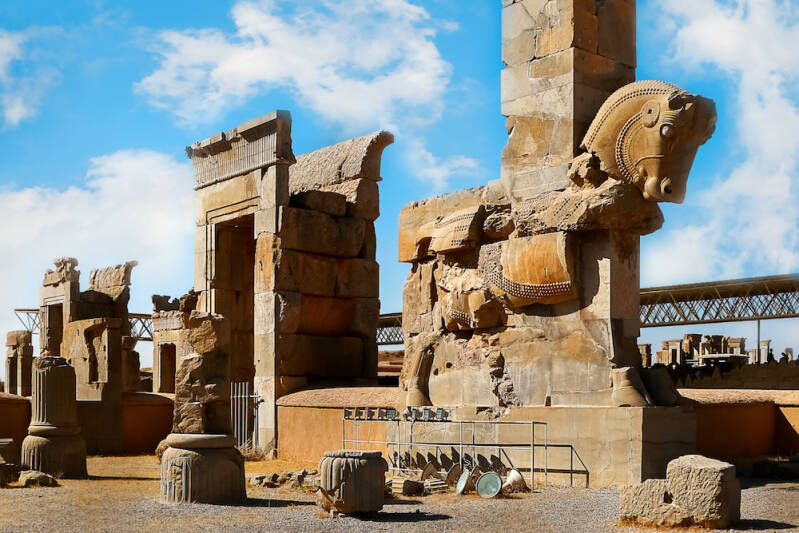
Day 10 – From Yazd to Persepolis and Pasargadae
Today you leave the desert city of Yazd, with its windcatchers and mud-brick architecture, and head toward Shiraz, the heart of ancient Persian history and culture. Along the way, you will make three important stops that showcase the glory of the Achaemenid Empire.
Your first stop is Pasargadae, the first capital of the Achaemenid Empire, established by Cyrus the Great. The most significant monument here is the Tomb of Cyrus the Great, an iconic symbol of Persia’s early imperial history.
Next, continue to Persepolis, the ceremonial capital of the Achaemenid Empire, located at the foot of Rahmat Mountain. Built primarily during the reign of Darius I, Persepolis served as a spring and summer royal residence and a ceremonial center where representatives of subject states came to pay tribute to the king. The complex includes nine main structures, including the Gate of All Nations, Apadana Staircase and Palace, Palace of Darius I, Palace of Xerxes, and the palaces of other Achaemenid kings.
Not far from Persepolis lies Naghsh-e Rostam, the royal necropolis of the Achaemenid dynasty. Carved high into the cliff face are four monumental tombs, while below the tombs, Sassanid-era rock reliefs depict scenes of royal triumphs and religious symbolism. Visiting these sites provides a profound insight into the political, architectural, and ceremonial grandeur of ancient Persia.

Day 11 – From Persepolis to Shiraz
After breakfast, you will have the option to revisit Persepolis in the morning for a final look at this iconic Achaemenid site before heading to Shiraz, a city known for its welcoming atmosphere, friendly locals, and rich history.
Shiraz was the capital of the Zand dynasty, and many of the city’s most important sites date back to this era. Begin your exploration with Arg-e Karimkhan, a grand citadel located in the heart of downtown Shiraz at the start of Karimkhan Zand Street. Nearby, you will find the Vakil Bazaar, Vakil Hammam, and Vakil Mosque, collectively forming the Karimkhan Complex.
Spend your afternoon strolling through the bazaar, enjoying the vibrant sights and smells of traditional Iranian market life. You can also relax in Saray-e Moshir, a historic teahouse, and try a refreshing herbal drink or Faloodeh, a traditional Shirazi cold dessert, for a true taste of local culture.
This day offers a seamless blend of ancient history, Zand dynasty architecture, and modern Shirazi life, providing a perfect introduction to one of Iran’s most charming cities.
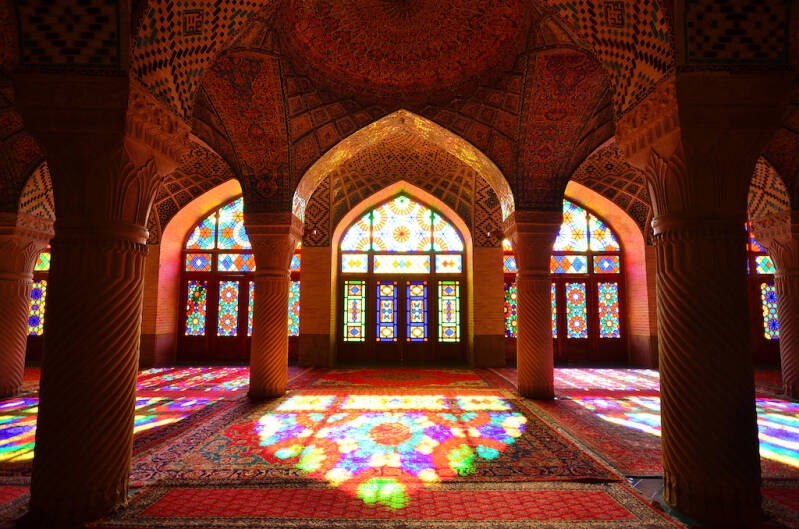
Day 12 – Exploring the Cultural and Poetic City of Shiraz
End your remarkable journey in Shiraz, a city where the rhythm of life is relaxed and enchanting. Known as the City of Roses and Nightingales, Shiraz has a rich heritage in Persian poetry and literature, having been home to many of Iran’s most famous poets.
Start your morning at the Nasir al-Molk Mosque, famously called the Pink Mosque for its extensive use of pink-colored tiles in the interior design. The mosque’s stained-glass façade creates a breathtaking spectacle in the morning sunlight, perfect for photography enthusiasts.
Next, visit the tombs of two legendary Persian poets, Hafez and Sa’adi, where you can appreciate the poetic spirit that permeates the city. Continue to the Eram Garden, especially beautiful in May when orange blossoms perfume the air, offering a peaceful and scenic retreat.
In the evening, experience the lively side of Shiraz. Locals often enjoy picnic dinners in the city’s parks, bringing families and children together for a relaxed evening. Alternatively, dine at one of Shiraz’s many restaurants with live music, savoring the final flavors of Persia in an atmosphere rich with culture and tradition.
This day provides a perfect blend of Persian poetry, architecture, gardens, and vibrant city life, marking a memorable conclusion to your Iranian adventure.
Day 13 – Departure from Shiraz
On your final day, an escorted transfer to Shiraz International Airport will be arranged according to your flight schedule. Say goodbye to Shiraz and all the incredible sights you have explored across Iran, taking with you unforgettable memories of Persian history, culture, and hospitality. Have a safe and pleasant flight.

